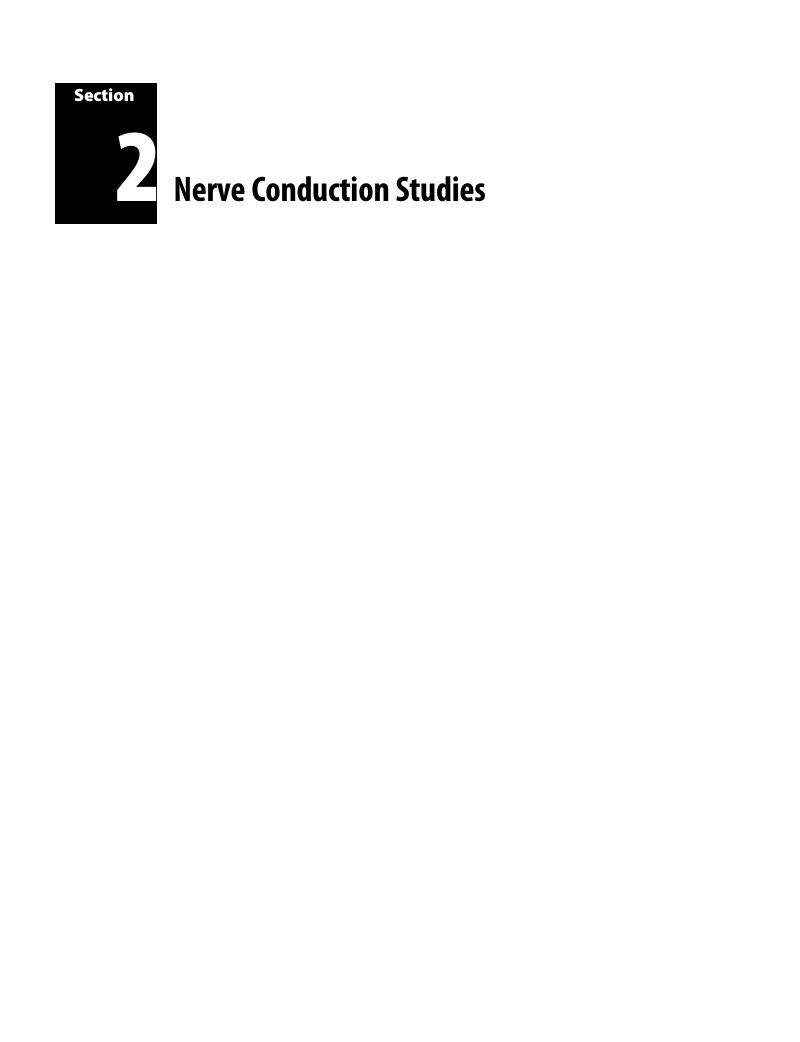Book contents
- Comprehensive Electromyography
- Comprehensive Electromyography
- Copyright page
- Dedication
- Contents
- Preface
- Acknowledgments
- Section 1 Introductory Chapters
- Section 2 Nerve Conduction Studies
- Section 3 The Needle EMG Examination
- Section 4 Other Pertinent EDX Information
- Section 5 Case Studies in Electrodiagnostic Medicine
- Section 6 Appendices
- Index
- References
Section 2 - Nerve Conduction Studies
Published online by Cambridge University Press: 08 May 2018
- Comprehensive Electromyography
- Comprehensive Electromyography
- Copyright page
- Dedication
- Contents
- Preface
- Acknowledgments
- Section 1 Introductory Chapters
- Section 2 Nerve Conduction Studies
- Section 3 The Needle EMG Examination
- Section 4 Other Pertinent EDX Information
- Section 5 Case Studies in Electrodiagnostic Medicine
- Section 6 Appendices
- Index
- References
Summary

- Type
- Chapter
- Information
- Comprehensive ElectromyographyWith Clinical Correlations and Case Studies, pp. 83 - 158Publisher: Cambridge University PressPrint publication year: 2018



